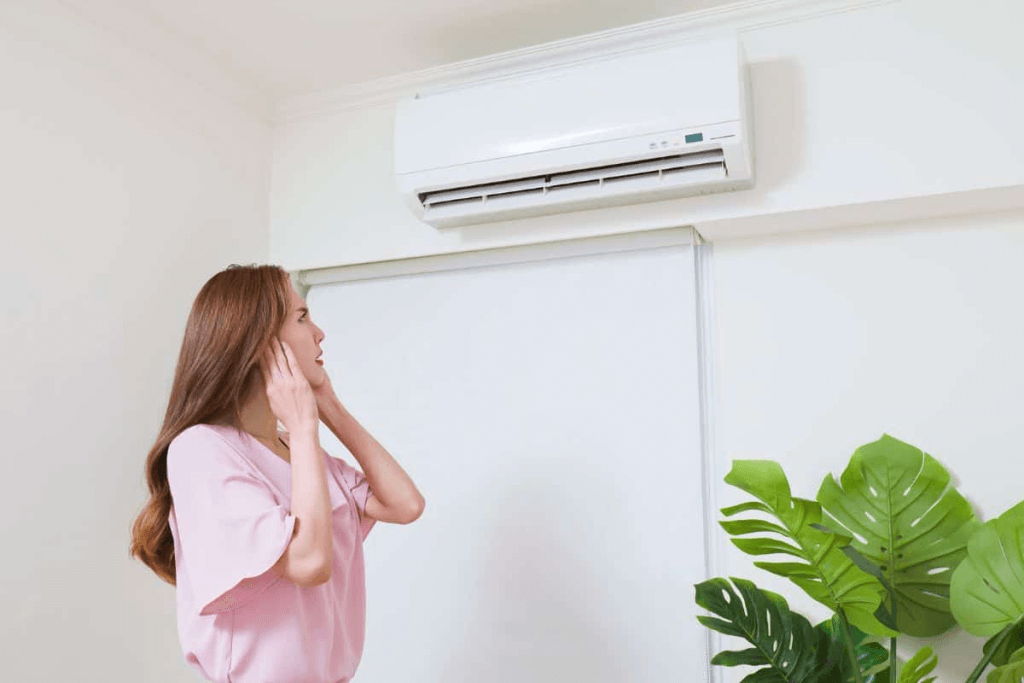Mini split air conditioners are designed for quiet performance and steady climate control. When unfamiliar sounds begin to occur, they often signal hidden issues. Recognizing these early warnings can prevent long-term damage and keep the unit running efficiently.
A ductless window air conditioner should not make more than a low hum during operation. Noises like clicking, buzzing, or hissing can suggest developing problems inside the unit. Identifying the sound and its cause helps technicians take the right corrective steps before performance declines.
Identifying Common Sounds and Their Causes
Different noises suggest different mechanical or electrical issues. Clicking sounds may come from the control board or thermostat engaging. Humming might relate to the compressor or motor working harder than expected.
A hissing or bubbling noise could be linked to refrigerant leaks or air trapped inside the lines. Both conditions reduce cooling efficiency and should be addressed quickly to avoid further system damage. Refrigerant leaks can also pose environmental hazards and violate safety standards. Additionally, insufficient refrigerant levels may place extra strain on the compressor, leading to premature failure.
Noises Related to Electrical and Airflow Issues
Buzzing sounds are often electrical in nature. These can come from a failing capacitor, loose wiring, or faulty contactor. Ignoring such sounds can risk electrical hazards or complete component failure. Early detection allows for safe repairs and minimizes the chance of system-wide shutdowns.
When the motor works against resistance, it may begin to hum. Dirty air filters or blocked vents force the system to work harder, increasing sound and stress on internal parts. This can shorten equipment lifespan and increase energy usage.
If you notice a persistent hissing sound, it could indicate a refrigerant leak, which not only affects the cooling efficiency but can also be harmful to the environment. Addressing this issue promptly is crucial to maintaining your system’s performance and safety. For those unsure about handling such problems, professional assistance is recommended. Click here to explore expert services that can help diagnose and resolve these issues effectively, ensuring your mini-split AC operates smoothly and efficiently. Remember, timely intervention can prevent minor issues from escalating into costly repairs, keeping your home comfortable and your energy bills in check.
Signs the System Is Straining
Consistent electrical humming may indicate overwork. The system could be compensating for airflow restrictions, mechanical wear, or an overloaded compressor. Addressing root causes early prevents widespread breakdowns and avoids energy waste.
Mechanical Noises from Internal Components
Rattling during operation usually comes from loose hardware screws, bolts, or brackets inside the unit. Over time, vibrations can shift parts out of place, causing louder and more frequent noise. If left unaddressed, these movements may damage internal components or misalign the fan assembly.
Screeching often points to motor belt issues or worn bearings. These parts experience friction, and overuse leads to degradation. If grinding sounds occur, it may indicate metal-on-metal contact and serious mechanical failure. Prompt replacement of worn components can prevent long-term damage to the motor and ensure smooth operation.
When Moving Parts Are Misaligned
An unbalanced fan blade or misaligned motor creates repetitive vibrations and unsettling noises. These can damage bearings or surrounding parts if not resolved promptly. A technician should check these components during scheduled service. Ensuring proper alignment also improves airflow and reduces unnecessary wear on the system.
Catch Problems Early to Avoid Bigger Repairs
Unusual sounds from a mini-split system should not be dismissed. Each noise points to a different issue, from minor airflow blockages to major electrical problems. Without attention, these can escalate into costly breakdowns. Timely inspection and corrective action can restore quiet operation and prevent recurring disruptions.
A ductless window air conditioner operates best with routine maintenance. Tightening hardware, checking refrigerant levels, and cleaning filters help reduce the chance of noise and wear. These simple tasks improve comfort and reliability.
Strange noises coming from a mini split unit are more than a nuisance; they are early indicators of mechanical or electrical issues. Whether it’s hissing, buzzing, or grinding, each sound deserves attention. Addressing the problem early extends system life, lowers repair costs, and ensures continuous performance without disruption. Paying attention to these sounds helps maintain long-term comfort and system reliability.
If you’re experiencing unusual noises from your mini-split AC, it might be time to consult a professional. Residents in Charleston, SC can find expert assistance to diagnose and resolve these issues. Whether it’s a rattling sound indicating loose parts or a hissing noise suggesting a refrigerant leak, addressing these problems promptly can prevent further damage and ensure your system runs efficiently. Regular maintenance and timely repairs are crucial in extending the lifespan of your unit and maintaining a comfortable indoor environment.
Cassia Rowley is the mastermind behind advertising at The Bad Pod. She blends creativity with strategy to make sure ads on our site do more than just show up—they spark interest and make connections. Cassia turns simple ad placements into engaging experiences that mesh seamlessly with our content, truly capturing the attention of our audience.


